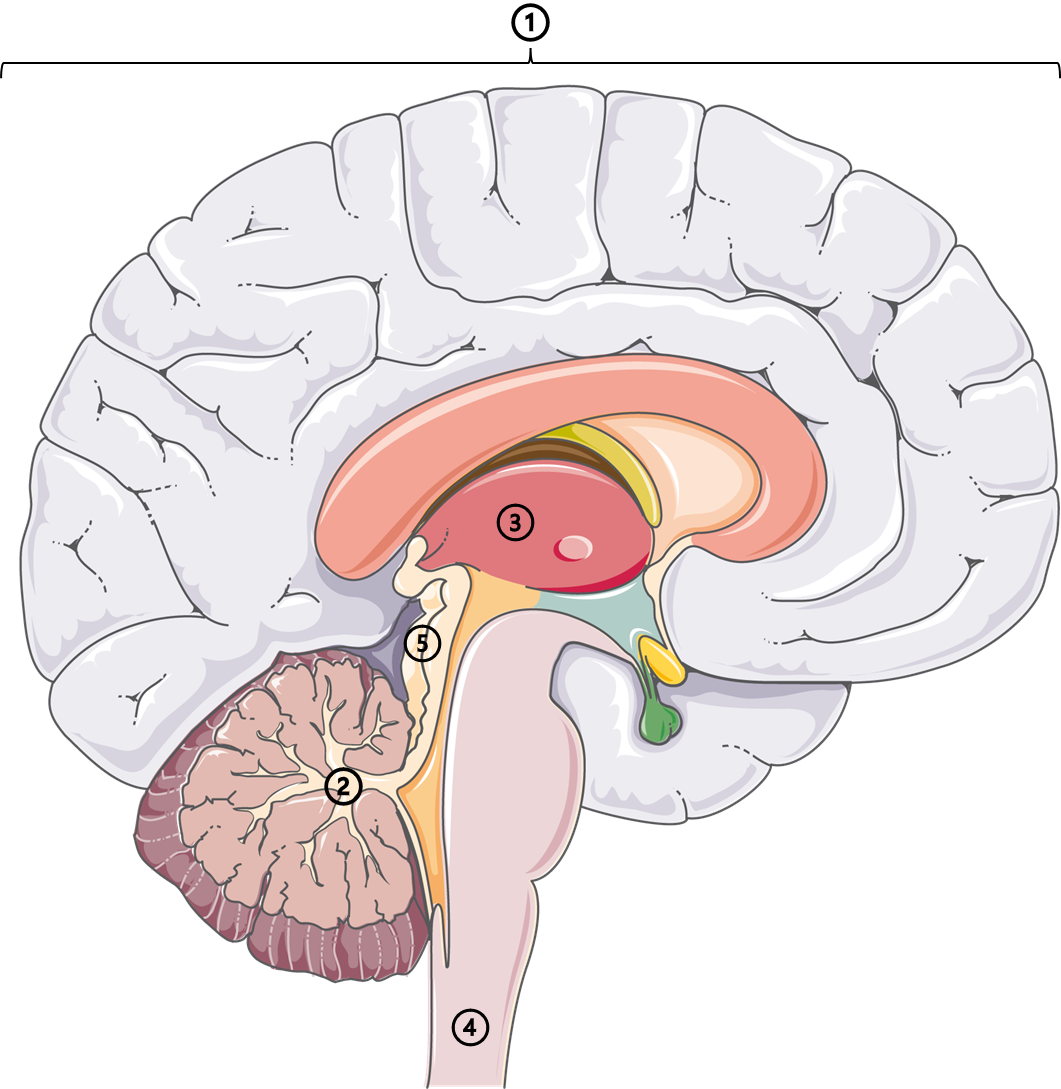Biology of sensory perception
7 Integration of Sensory Signals in the Brain
Sensory neuroscience explores the neurobiology of the sensory system. As you have learned in the previous chapters, in food perception, all sensory systems — the gustatory, olfactory, visual, somatosensory and auditory systems — play a role.
When a food or other stimulus is present, it causes a reaction in the nervous system. This reaction changes the electrical state of a sensory neuron, which then sends a signal called an action potential. This sensory signal travels from the sensory organ to the brain.
Different types of sensory information travel through different pathways in the central nervous system. Most of this information first goes to the thalamus, a part of the brain that sends it to the correct area of the cerebral cortex. For example, visual information goes to the primary visual cortex, and sound information goes to the primary auditory cortex.
These brain areas then send the information to the association cortex, where it is combined with other types of information. This process helps the brain understand things more clearly. For example, it helps recognise what an object is and where it is or helps understand spoken language.
Brain structures
The neurobiology of smell and taste senses occurs mostly in the brain. Here, signals are transported and linked to information coming from other senses and our memory, to enable us to judge the sensory information.
Figure 5 shows a cross section of the brain and the structures that are most important for sensory evaluation. The cerebrum (1) contains the primary gustatory cortex and olfactory cortex. The primary gustatory cortex receives signals from the tongue and helps the brain identify the five basic tastes and to evaluate tastants on pleasantness. The olfactory cortex receives signals from the nose through the olfactory bulb, and helps the brain recognise, identify and evaluate different odours. The thalamus (3) is the relay station of sensory signals to the different cortices. The thalamus is called the relay station because it receives sensory signals from the body and sends them to the correct areas of the brain’s cortex for further processing. It helps organise and direct the information. The hippocampus (5), located between the thalamus and cerebellum, is important for memory and learning. The brainstem has special areas for cranial nerves. These areas help carry sensory information from the head and neck to the brain. Cranial nerves are nerves that come directly from the brain and control things like feeling, movement, and senses in the head and neck.
The brain is a complex organ. When you click on this link, you can play around with a 3D-model of the brain, and you can inspect the areas related to the sensory system more closely.

Figure 5. Overview of brain structures involved in sensory processing. Cerebrum (1), the largest part of the brain, contains structures as the primary gustatory cortex and olfactory cortex. The cerebellum (2) is the hindbrain that is connected to the spinal cord (4) via the medulla oblongata. The thalamus (3) is the relay station of sensory signals to the cortex. The hippocampus (5) is important for memory and learning.
Adapted from: Drawing Brain sagittal section – no labels by SMART Servier. License: CC BY
The gustatory sensory system contributes to the flavor of foods and beverages and communicates information about taste and nutrients.
The olfactory sensory system is the sense of smell. Including both the smell coming from the nasal and oral cavities.
The visual sensory system enables you to be aware of color, light level, contrast, motion and other visual stimuli. It entails all that you can see, including the intensity of light of your surroundings.
The somatosensory system is touch or tactile perception. It is a network of neurons that help humans recognize objects, discriminate textures, generate sensory-motor feedback and perceive temperature differences.
The auditory sensory system is the sensory system for the sense of hearing. In nutrition context, it entails both the sounds of your food before you eat it (sizzling when baking, sparkling drinks etc.) and during consumption (e.g. cracking of crisps).
The brainstem is the lower, stalklike part of the brain. It connects the brain and spinal cord and carries signals that control body functions.
The cranial nerves are a set of 12 paired nerves going to the brain. They help the brain and body communicate senses, movement or both.